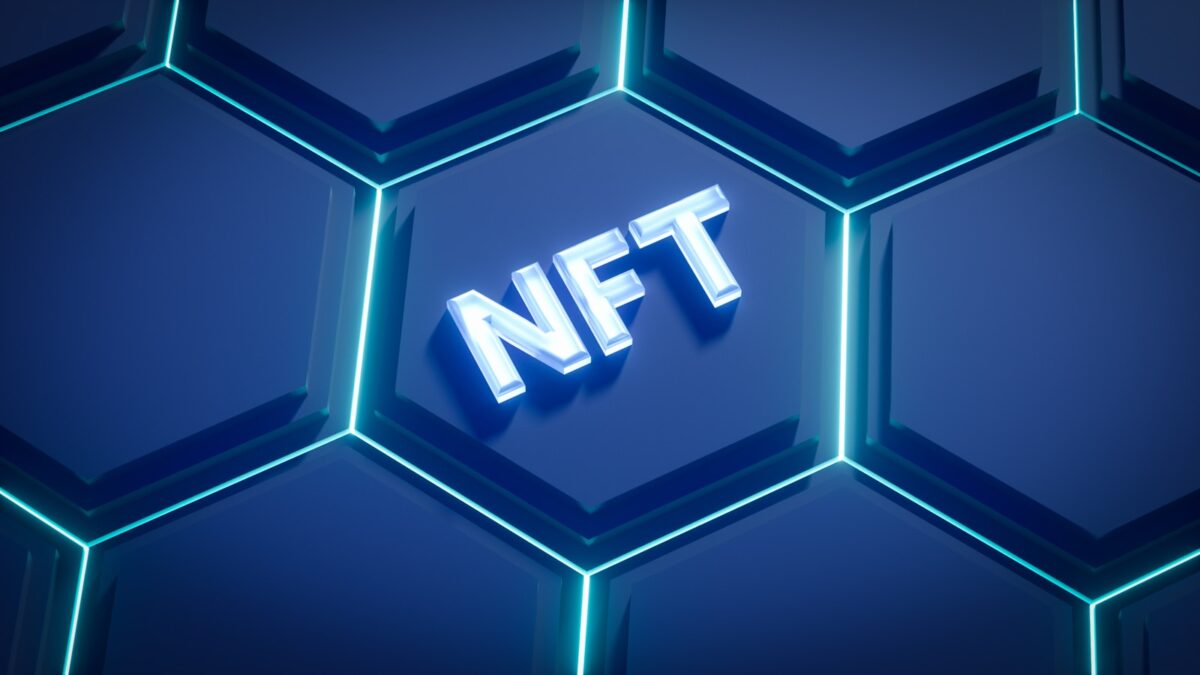
Oracles in blockchain explained

Integrating reliable external information into decentralized applications is fundamental for expanding their real-world utility. Specialized data bridges serve as intermediaries, delivering verified external data streams directly to smart contracts. This connectivity allows automated agreements to react dynamically based on real-time events beyond their native environment.
These mechanisms act as trusted conduits that authenticate and transmit off-chain data such as financial prices, weather metrics, or event outcomes. By securely linking independent data sources with internal logic execution, they enable autonomous contracts to operate with contextual awareness, enhancing decision-making processes without human intervention.
Establishing robust channels for this external input requires rigorous validation protocols and cryptographic proofs to maintain trustworthiness. Experimentation with various oracle designs reveals trade-offs between decentralization, latency, and security guarantees. Investigating these approaches offers a clearer understanding of how information flow can be optimized to support complex programmable agreements within distributed ledgers.
Understanding Data Connectivity in Decentralized Systems
For smart contracts to execute autonomously and reliably, they require accurate external information that exists beyond their native environment. This necessity creates a dependency on specialized mechanisms designed to serve as a bridge between the isolated ledger and real-world data sources. These entities fetch, verify, and transmit off-chain information such as financial market prices, weather conditions, or event outcomes into the decentralized network, enabling conditional logic within programmable agreements.
The challenge lies in ensuring that this flow of information maintains integrity and resists manipulation while conforming to the trustless ethos of distributed ledgers. By integrating these data feeds securely, decentralized applications gain enhanced functionality–transforming static code into dynamic instruments responsive to external stimuli.
Mechanisms for Bridging External Information with On-Ledger Execution
Connectivity solutions employ various technical architectures to relay data from trusted sources into the execution environment. Some rely on centralized nodes pulling verified datasets via APIs, while others utilize decentralized aggregates of multiple providers to mitigate single points of failure. For instance, decentralized networks often implement consensus protocols among independent feeders who submit identical data points; discrepancies trigger dispute resolution or fallback procedures.
An illustrative example includes systems that retrieve price feeds from numerous exchanges simultaneously, averaging values after filtering out anomalies. Such approaches enhance reliability by cross-validating inputs before committing them on-chain. Additionally, cryptographic proofs can attest to source authenticity and data freshness–a vital factor where timing impacts contract performance significantly.
Integration Techniques with Programmable Logic
Embedding external information within automated contracts requires carefully designed interfaces that translate off-chain observations into verifiable on-chain events. This translation involves encoding received values in transaction payloads processed by virtual machines executing contract bytecode. Developers must consider latency constraints and potential synchronization errors when designing these communication flows.
- Push Model: Data providers initiate transmissions when new information becomes available.
- Pull Model: Contracts request specific data points at execution time through intermediary services.
- Hybrid Approaches: Combining push notifications with periodic verification queries enhances robustness.
The choice among these methods influences gas consumption, throughput scalability, and security guarantees inherent in the system’s design philosophy.
Case Study: Financial Derivatives Utilizing Off-Chain Inputs
A practical demonstration involves derivatives platforms that depend on precise asset valuations to trigger settlements automatically. By sourcing price quotations from multiple reputable venues and consolidating them through threshold-based validation mechanisms, these platforms reduce risks associated with misinformation or delayed updates.
Tackling Security Challenges in External Data Integration
The introduction of outside inputs inherently expands the attack surface of automated agreements. Malicious actors may attempt to inject false information or exploit timing discrepancies. Countermeasures include cryptographic signatures validating data origin and multi-party verification schemes distributing trust among independent entities.
An advanced methodology involves leveraging hardware-based secure enclaves or zero-knowledge proofs to guarantee that transmitted information remains untampered during transit and processing phases. Designing fault-tolerant systems capable of rejecting suspicious inputs without halting operations is critical for maintaining continuous reliability.
The Future Trajectory of Cross-Domain Data Interoperability
Evolving frameworks are exploring standardized protocols allowing seamless communication between isolated ledgers and diverse external ecosystems including Internet-of-Things sensors, traditional databases, and global information networks. Experimental initiatives demonstrate how integrating real-time telemetry can enable programmable logistics management or decentralized insurance products sensitive to environmental parameters.
This progressive fusion fosters a spectrum of novel use cases where autonomous execution adapts fluidly based on trustworthy insights extracted beyond internal environments. Encouraging experimentation with varying degrees of decentralization in connectivity layers propels understanding toward resilient architectures balancing efficiency against security demands effectively.
How External Data Is Retrieved for Smart Contracts
Reliable connectivity between decentralized applications and external data sources is fundamental for enabling smart contracts to execute based on real-world information. Specialized middleware components act as a bridge, facilitating the secure transmission of verified data from off-chain environments into the immutable ledger. This process involves querying APIs, databases, or sensors, then formatting and relaying the information to contract logic in a manner that preserves integrity and trustlessness.
The mechanism begins when a smart contract emits an event or explicitly requests specific external information. The intermediary solution listens for these triggers and initiates data retrieval through predefined protocols tailored to the data provider’s interface. Once collected, this external input undergoes validation steps–ranging from cryptographic proofs to consensus among multiple sources–to mitigate risks of manipulation before final delivery back on-chain.
Architectural Components Ensuring Accurate Data Transfer
At the core of this integration lies a multi-layer architecture: data providers, middleware nodes, aggregation layers, and final relay modules. Each node connects with distinct external endpoints–such as financial market feeds or IoT devices–extracting raw metrics like asset prices or environmental readings. Middleware nodes then parse and normalize heterogeneous datasets into standardized formats compatible with blockchain protocols.
To guarantee robust security, systems often employ decentralized networks of independent operators who submit signed attestations about retrieved values. By cross-verifying submissions through consensus algorithms or threshold signatures, these frameworks significantly reduce single points of failure. Consequently, smart contracts receive consensus-backed outputs that reflect accurate states outside their own environment.
- Connectivity: Establishes persistent channels between on-chain code and off-chain resources using HTTP requests, WebSocket streams, or specialized SDKs.
- Data Validation: Implements cryptographic methods such as zero-knowledge proofs or digital signatures validating authenticity before acceptance by contracts.
- Aggregation: Combines multiple inputs via weighted averaging or median calculations to counteract outliers and adversarial attempts.
This layered design exemplifies how distributed ledger ecosystems can expand beyond internal states by harnessing trustworthy external signals without compromising decentralization principles.
Case Study: Price Feeds in Decentralized Finance (DeFi)
A prominent example includes decentralized finance platforms requiring up-to-date price quotations for collateral valuations or liquidation triggers. Dedicated oracle services connect to numerous exchanges’ public APIs to fetch pricing snapshots at fixed intervals. These are aggregated across multiple nodes which independently verify feed accuracy through cross-referencing order books and trade volumes before submitting results on-chain.
This multi-source approach prevents erroneous liquidations caused by flash crashes on isolated venues while maintaining high availability under network stress scenarios. Smart contracts subscribe to these validated feeds via event-driven callbacks ensuring timely responses aligned with protocol rules. Through this methodology, DeFi applications maintain consistent state updates reflecting actual market dynamics critical for economic soundness.
Technical Challenges in Bridging On-Chain Logic with Off-Chain Data
The temporal gap between external events occurrence and their reflection inside distributed ledgers poses synchronization challenges demanding meticulous timestamping strategies embedded within transmitted payloads. Additionally, handling diverse data types–from numerical values to structured JSON objects–requires flexible encoding schemes such as Protocol Buffers or CBOR optimized for gas efficiency during contract execution.
Error handling mechanisms also play a pivotal role; fallback procedures may trigger alternative data sources if primary connections fail or deliver anomalous outputs exceeding predefined thresholds. This redundancy ensures continuous service availability crucial for mission-critical applications including insurance claim adjudication based on weather conditions reported via sensor networks integrated externally.
The Role of Cryptography in Securing External Information Flow
Cryptographic tools underpin the authenticity guarantees required during off-chain data ingestion. Digital signatures enable origin verification ensuring that received messages stem from authorized entities rather than malicious actors attempting spoofing attacks. Moreover, advanced constructions like threshold signatures allow groups of operators to collectively sign data bundles only once consensus is reached internally among themselves.
This collective validation approach not only strengthens resistance against collusion but also optimizes transaction costs related to posting large amounts of verification evidence on decentralized ledgers where computational resources are scarce and costly. It creates an efficient trust layer bridging disparate systems while preserving immutability promises inherent in the underlying distributed framework.
Towards Future Developments: Enhanced Interoperability Protocols
The emergence of cross-network standards aims at improving interoperability between autonomous ledgers and varied external ecosystems providing diversified datasets ranging from identity credentials to geospatial insights obtained via satellite telemetry. Protocol innovations targeting generalized connectivity models propose modular adapters capable of interfacing seamlessly with heterogeneous endpoints without reengineering core logic repeatedly.
Pursuing composable architectures facilitates dynamic discovery mechanisms whereby smart contract developers can select optimal information providers depending on criteria like latency sensitivity or trust scores dynamically calculated through reputation systems integrated within middleware layers. Such advancements promise richer contextual awareness empowering decentralized applications beyond traditional boundaries set by isolated transactional records alone.
Types of Blockchain Oracles
External data bridges serve as a fundamental mechanism for connecting smart contracts with real-world information. These intermediaries retrieve off-chain data, such as financial market prices, weather conditions, or sports results, and feed it into decentralized applications. By acting as trusted conduits, external sources enable automated contracts to execute based on timely and verifiable inputs that are otherwise inaccessible within the blockchain environment.
Smart data relays can be categorized broadly into software-based and hardware-based oracles. Software variants extract digital data from APIs, web scraping, or cloud storage platforms to supply accurate information streams. Hardware solutions utilize physical sensors or IoT devices to capture environmental parameters like temperature or location coordinates, translating analog signals into blockchain-readable formats. Both types maintain distinct security and reliability profiles depending on the use case complexity.
Classification Based on Data Flow and Trust Model
- Inbound Oracles: These provide external information into smart contracts, enabling event-driven automation. For example, Chainlink’s decentralized oracle network aggregates price feeds from multiple sources to minimize manipulation risks.
- Outbound Oracles: They transmit instructions from on-chain logic to external systems, such as triggering payments in traditional banking infrastructure after contract fulfillment verification.
- Consensus-Based Oracles: Employing multiple independent nodes to validate incoming data enhances trustworthiness by requiring agreement among participants before updating contract states.
The diversity of interface methods also affects integration strategies. Centralized connectors offer simplicity but introduce single points of failure, whereas decentralized alternatives distribute trust across numerous entities to resist censorship and tampering attempts. Selecting an appropriate oracle type demands rigorous evaluation of latency requirements, data authenticity guarantees, and vulnerability exposure tailored to specific application domains.
Securing Oracle Data Inputs
Ensuring the integrity and reliability of data fed into decentralized smart contracts requires robust mechanisms to validate external information streams. The security of these inputs hinges on establishing trust boundaries between off-chain sources and on-chain environments, preventing manipulation or corruption during transmission. Techniques such as cryptographic proofs, multi-source aggregation, and consensus algorithms form the backbone of secure data acquisition strategies.
Bridging real-world data with distributed ledger environments demands precise connectivity protocols that minimize attack vectors. Employing redundant pathways and cross-verification among multiple independent providers enhances resilience against single points of failure. For instance, decentralized oracle networks utilize economic incentives combined with reputation systems to align participant honesty with the accuracy of submitted information.
Technical Approaches to Data Validation
The adoption of cryptographic signatures from trusted data publishers enables smart contracts to verify the authenticity of incoming information without relying solely on intermediary nodes. This approach reduces dependency on centralized bridges by embedding verifiable attestations directly within transmitted payloads. Additionally, threshold signature schemes allow multiple parties to collectively sign data, increasing confidence in its validity before triggering contract execution.
Data aggregation methods mitigate discrepancies arising from diverse external sources by employing weighted averaging or median filtering algorithms. Such techniques reduce susceptibility to outliers or malicious actors attempting to skew outcomes. Case studies involving decentralized finance (DeFi) platforms demonstrate how aggregating price feeds from several exchanges prevents erroneous liquidations caused by faulty inputs.
- Redundant Data Streams: Parallel retrieval from distinct APIs or sensors ensures continuity even if one source becomes compromised.
- Economic Game Theory: Incentive structures penalize dishonest reporting through stake slashing or reward redistribution.
- On-Chain Verification: Smart contracts implement logic checks comparing new inputs against historical patterns or predefined thresholds.
A practical example can be found in weather-indexed insurance solutions where multiple meteorological services supply rainfall measurements. By verifying consistency across these datasets before triggering payouts, contracts avoid false claims based on erroneous readings. Such implementations highlight how integrating external environmental data necessitates sophisticated validation frameworks embedded within the decentralized application logic.
Use Cases for Blockchain Oracles
Integrating external data sources into decentralized applications significantly expands their functionality by providing smart contracts with real-world information. This connectivity acts as a crucial bridge, enabling automated agreements to interact beyond isolated ledgers and respond dynamically to external conditions. For instance, financial derivatives can rely on precise market data feeds to execute settlements without intermediaries, leveraging verified external inputs to enhance trust and efficiency.
Supply chain management benefits from this interface by obtaining accurate shipment status or environmental readings directly from IoT sensors. Such data ensures transparency and traceability throughout the logistics process, allowing contracts to trigger payments or alerts based on validated delivery milestones or storage conditions. By connecting physical events with programmable contracts, enterprises can reduce fraud risk and optimize operational workflows.
Practical Applications Leveraging External Information
Insurance protocols utilize these mechanisms by assessing real-time parameters like weather events or flight delays, automating claim processing when predefined criteria are met. This reduces manual intervention and accelerates user compensation while maintaining auditability through immutable records. The ability to source trusted external facts transforms traditional policy enforcement into fully autonomous systems.
Decentralized finance platforms exploit these connections to obtain reliable price feeds, ensuring accurate collateral valuations and liquidation triggers. Aggregating multiple independent data providers enhances resilience against manipulation attempts, preserving ecosystem stability under volatile market conditions. This approach exemplifies how bridging off-chain information with on-chain logic sustains robust financial instruments.
Gaming and prediction markets further illustrate diverse use cases by incorporating event outcomes or sports scores verified through external channels. These inputs enable transparent reward distribution based on factual results, eliminating disputes inherent in centralized scenarios. The fusion of objective real-world data with programmable rules opens avenues for innovative interactive experiences grounded in verifiable truth.
Integrating External Data Feeds with Autonomous Protocols
Effective connectivity between decentralized ledgers and external data sources is paramount for expanding the utility of autonomous protocols. Leveraging intermediaries that bridge on-chain logic with off-chain information enables contracts to respond dynamically to real-world events, ranging from financial market fluctuations to environmental sensor readings.
Incorporating such mechanisms requires rigorous attention to data authenticity, latency, and fault tolerance. For instance, multi-source aggregation combined with cryptographic proofs can mitigate risks of false inputs, preserving the integrity of contract execution while enhancing responsiveness. This synergy transforms isolated ledgers into interactive platforms capable of complex conditionality tied directly to verifiable external stimuli.
Broader Implications and Future Directions
- Enhanced Contract Versatility: Integrating reliable feeds allows smart agreements to automate processes in insurance payouts triggered by verified weather data or decentralized finance protocols adjusting collateral ratios based on price oracles.
- Scalability Challenges: As demand for diverse datasets grows, scalable architectures supporting parallel query handling without compromising consensus speed become critical.
- Security Paradigms: Novel approaches such as threshold signatures and hardware-based secure enclaves promise improved resistance against manipulation within these connective layers.
- Regulatory Alignment: Transparent and auditable data pipelines facilitate compliance by providing immutable evidence trails linking contract conditions with external facts.
The trajectory points toward increasingly sophisticated hybrid systems where autonomous protocols evolve beyond static codebases into adaptive entities interacting seamlessly with their environment. Experimentation with cross-domain interoperability and standardized interface protocols will be essential for unlocking new classes of applications that harness live, trustworthy data streams while maintaining decentralization principles.
This continuous integration invites researchers and developers alike to explore architectures that balance openness with security imperatives, fostering innovations that push the boundaries of programmable trust in distributed networks.


